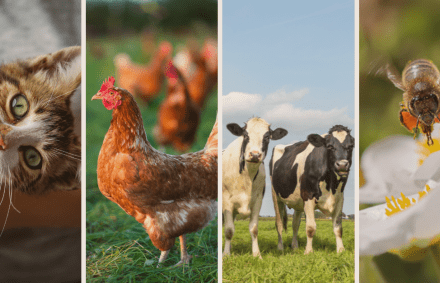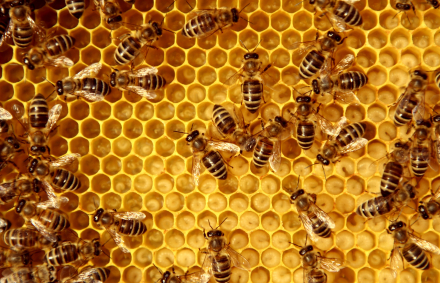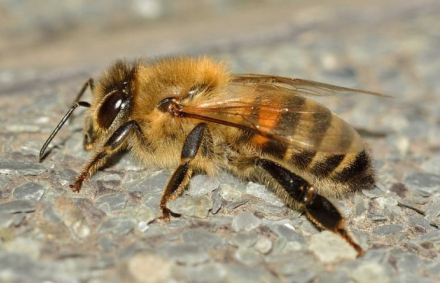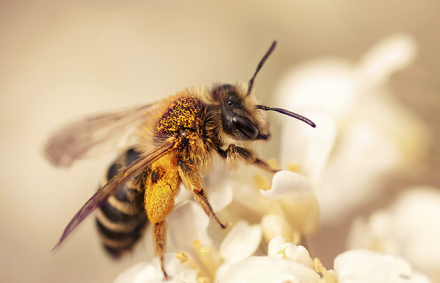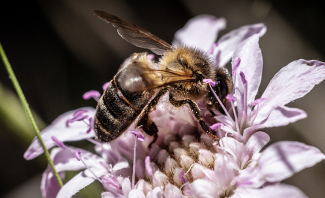
In a beekeeping season, the annual progression of varroa in a hive will depend on the number of months that brood is present. Each month, the amount of varroa will double, or triple if there are sufficient drone brood.
In a Central European climate, with a winter laying shutdown, a hive can last about 2 years without treatment, as the varroa population decreases during the non-breeding season (the old hives die and no new brood is born). However, in a Mediterranean climate, with no laying shutdown, infested hives will rarely survive a year without treatment; only the "tolerant" ones, usually less than 10%, will survive.
The proportion of bees and their parasitised brood will determine the colony's chances of producing and surviving varroa and "collateral" health problems (bacteria, fungi, viruses).
As can be seen in Fig. 1, Oliver 2007, the initial number of varroa in a hive at the beginning of the season will double every month, or triple if there are drone broods. At the end of the season, in autumn, if not before that, the number of varroa/number of bees will have increased significantly, making it impossible for the hive to survive in most areas of the Iberian Peninsula.
The bee population of a hive will increase from the beginning of winter until the peak in spring and then taper off throughout the summer. If the weather is suitable and rainfall distribution is adequate, there may be a second population spike in the autumn, which is very important to be able to enter the wintering season with young and fat bees. This bee will hold up well until the start of the following spring and will quickly lead the population to grow.
This is the case of fixed hives, but it must be remembered that in Spain 80% of hives are movable. Therefore, the bees will shift between earlier and later springs, with the latter generally not being as intense as the former. But they will still yield significant population increases, with the consequential increases in the varroa population.
In many cases, this situation may ultimately require up to three varroa population control treatments in the season. However, it should not be treated at a fixed date, but rather after a survey of the amount of varroa present, and after verifying that the right level has been
reached, which is elaborated upon in the “Varroa, quien no mide, no mejora” [He who does not measure Varroa does not improve] post. The ideal times for this, unless there is a serious re-infestation requiring urgent action, would be: when the hives are uprooted, in summer, and in preparation for overwintering.
Beginning of the season.
As W. Thompson said, “If you cannot measure it, you cannot improve it”. We have to know how much varroa we have to be able to make sound control decisions.
Obviously, if you start the season with a higher varroa level, your growth curve in Fig. 1 will shift upwards on the graph and the hive will reach the collapse point before autumn.
Therefore, it is very important to start the campaign with low levels of varroa. Depending on whether we measure on adult bees or brood, it is recommended not to exceed 2 varroa/100 bees, or equivalently not more than about 5 varroa/100 operculated worker cells. If there are 3 varroa/100 bees, or 15/100 worker cells, treatment is necessary.
Periodically, ideally every month and a half, the varroa population should be monitored, following any of the methods proposed in the "Varroa, quien no mide no mejora" [He who does not measure Varroa does not improve]. These varroa level measurements should be more exhaustive when we have adjacent apiaries.
Summer.
Assuming that we have started the season with little varroa, some hives will evolve differently depending on the type of varroa, the bees' hygienic behaviour, the area, the type of hive, neighbours... As we saw in the “Varroa, conoce a tu enemigo” [Varroa, know your enemy] post, varroa will grow more slowly in some hives and much faster in others.
In this season, there are a good number of bees and brood in the hives, which means that there will also be quite a lot of varroa, which to a certain extent the hive will be able to cope with. However, it is very possible that we already have more or fewer hives with levels that require treatment. These hives will be the reservoir from which the varroa population will spread, first to the adjacent hives by bee drift and, if they perish, by robbing from the more active hives.
A 3% varroa in bees means on average about 5 kg less harvest. Therefore, at this point, before the summer harvest flowering, we should check the varroa level in the apiaries, and if it exceeds 3%-4% of the bees, or approximately 15% of the brood, treat.
Given the proximity of the harvest, this treatment should be carried out as far as possible with products that do not generate residues in the honey, preferably based on natural molecules (formic, oxalic, thymol) whenever possible. Steps must always be taken to minimise this problem, such as not treating in the honey storage area. These measures should be stricter if treatments with synthetic molecules are chosen, e.g. marking the squares in contact with the treatment and not harvesting them.
Autumn.
The end of the summer harvest is a good time to do the wintering preparation treatment, limiting the varroa population to levels that allow the hives to survive the critical winter period. It is very important to ensure that hives can enter wintering with no more than 3%
varroa out of the workers, or the equivalent 10%-15% out of operculated worker brood. A 3% of varroa out of bees, or the equivalent in brood, signifies a 30% winter mortality rate. In a well-looked-after apiary, the winter mortality rate should not normally exceed around 12%.
This last treatment can be done with a conventional acaricide, preferably based on amitraz, which has demonstrated greater efficacy and safety of results, Hernández-Rodríguez 2021, and will always be more effective than the treatments with natural molecules (formic, oxalic, thymol).
